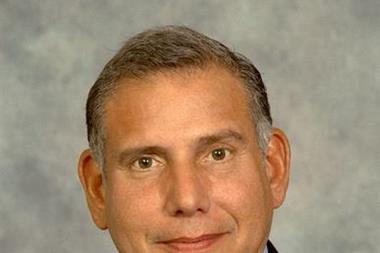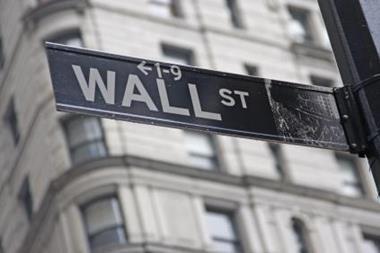Lee Coppack tracks the demise of a well established bank
On 30 July 2002, US President Bush signed the Sarbanes-Oxley Act, a law designed to stop a repetition of such corporate scandals as Enron and WorldCom. On 29 January 2008, Alan Schwartz, president and chief executive of investment bank Bear Stearns, personally certified the holding company's accounts, as the law required. Two months later, the 80 year old bank was no more.
A stronger, much larger bank, JPMorgan, Chase & Co, had pulled it from an inevitable descent into insolvency. The fall of Bear Stearns was swift. In 2006, Standard & Poor's had upgraded the company to A+ with a stable outlook, and in the annual report for the year, published in early 2007, then chairman and CEO James Cayne, boasted that the bank’s rising book value and share price had been built on ‘a firm foundation’.
However, US house prices had already begun to dip, and by March 2007, it was clear the housing bubble was losing air, and pulling down the vast derivative market built on top of it. Bear Stearns was highly leveraged and had a concentration of exposure to mortgage-backed assets.
By June 2007, it had to shore up hedge funds under pressure from the collapse of the market for mortgages to people with weak credit ratings, known widely as the subprime borrowers, and the devaluing of the derivative contracts based on the mortgages. In July, the bank revealed to investors that losses to two of its hedge funds were far worse than expected; one had no value at all remaining.
In December, Bear Stearns reported the ever first quarterly loss in its 84 year history, the extent of which was nearly four times analysts’ forecasts. A few weeks later, James Cayne announced his resignation. Alan Schwartz took over his roles as president and chief executive.
The bank staggered on until the week of 10 March 2008, when rumours about liquidity problems followed the collapse of an Amsterdam listed hedge fund, Carlyle Capital. Alan Schwartz tried to reassure the market that the bank’s balance sheet remained strong and it was not suffering pressure on liquidity, but the bank was unable to get secured financing from counter-parties.
“More regulation will follow the current crisis, and with no better effect than SOX
On 14 March, Bear Stearns arranged emergency funding from JP Morgan and the New York Federal Reserve, but it soon became clear this was not going to restore confidence. On March 16, JP Morgan agreed to buy out Bear Stearns shareholders for $236m or $2 a share. Fourteen months earlier, the shares had been worth $169 each. Morgan was later induced to increase the payment to $10 a share.
The market was shaken, but a little relieved, and the stock market began to rally. Then in September the US government had to inject up to $100bn into two giant mortgage finance companies, Freddie Mac and Fannie Mae, and nationalise the insurance and financial American International Group (AIG). An even more venerable bank, Lehman Brothers, failed. From there, the financial markets have continued to unravel.
The non-barking dog
One of the few experts who has questioned the value of Sarbanes-Oxley, commonly known as SOX, in relation to the current crisis is Professor Larry Ribstein of the University of Illinois College of Law. In his ideablog (at http://busmovie.typepad.com /ideoblog/2008/09/some-thoughts-a.html) on 21 September, he argued that not only had SOX failed to deal with problems that were already in the works when it was passed, but also that such regulation actually encouraged the very complexity in derivatives that made them so difficult to value, because the markets were working around the regulatory restrictions.
He said, ‘SOX was sold as the way to prevent future market bubbles and crashes. Obviously, in addition to imposing huge costs, it utterly failed to deal, not only with some indefinite future, but with problems that were already brewing at the time SOX was enacted. Indeed, SOX may well have hurt by helping to make investors complacent. Enough is enough. Let’s try to think before we leap again off the regulatory cliff.’
From the Federation of European Risk Management Associations (FERMA), vice-president Franck Baron makes another point. He says that the rules and controls, such as SOX, diverted corporate sponsorship and resources away from risk management and into the compliance process. ‘One of the many things keeping senior executives awake is whether so many firms would have been caught off guard if a risk management process had provided a broader and more strategic view of risk.’
“The bank staggered on until the week of 10 March 2008
There is no question, in theory at least, that Bear Stearns was aware of the type of risks that the business created and had systems and controls to manage them. A risk management report takes up nine pages of the bank’s 2006 annual report and provides a range of assurances to shareholders and regulators about the way the bank has identified and risks and instituted controls. It even acknowledged the risk of ‘losses arising from inadequate or failed internal processes, people or systems’.
The quality of the application of these policies is more doubtful. A rapidly organised investigation into the oversight of Bear Stearns and related entities by the Securities and Exchange Commission (SEC) found that there had been numerous shortcomings in the bank’s mortgage risk management.
In his report published on 25 September, David Kotz, inspector general of the SEC, said that the SEC trading and markets division had been aware of factors such as lack of expertise by risk managers in mortgage-backed securities at various times, lack of timely formal review of mortgage models, persistent understaffing, a proximity of risk managers to traders, suggesting a lack of independence, and an inability or unwillingness to update models to reflect changing circumstances – but the division had failed to act on the information.
Missing information
A major risk missing from the Bear Stearns report is the concentration of authority in the hands of one person, James Cayne, who was not only chairman of the board and CEO, but also served on the executive committee and chaired the management and compensation committee. The executive committee and the management and compensation committee between them were the two senior groups responsible for the company’s risk management policies, the annual report explains.
The executive committee had ultimate approval of decisions regarding the company’s risk appetite and risk taking capacity. It delegated a number of decisions on business risk to the management and compensation committee, which also had primary responsibility for compensation issues, known clearly from cases like Enron to affect the behaviour of market traders and sales people.
“More regulation will follow the current crisis, and with no better effect than SOX.
Professor Frank Portnoy, a former derivatives trader turned professor of law at San Diego University, commented on the influence of the top man at Bear Stearns and another bank, Lehman Brothers, which was allowed to fail. Writing in the Financial Times on 14 September 2008, he asks, ‘Is it just coincidence that both Lehman Brothers and Bear Stearns were led by entrenched men who lost touch with their employees, businesses and mission? Did hubris cause the collapse of these two venerable banks?
‘Both also became progressively autocratic. When the subprime crisis began, both men were temporarily missing in action and ultimately turned on their seconds-in-command, who best understood the financial instruments that destroyed their firms. Both ignored early warnings about derivatives and stuck to outdated business models.’
One of the strongest warnings, which it is hard to believe anyone in the financial market would not have heard, had come in 2002 from Warren Buffett, the CEO of Berkshire Hathaway noted for his philosophy of value investment. He described derivatives as ‘financial weapons of mass destruction’.
In the company’s annual report for the year, he wrote, ‘The derivatives genie is now well out of the bottle, and these instruments will almost certainly multiply in variety and number until some event makes their toxicity clear. Knowledge of how dangerous they are has already permeated the electricity and gas businesses, in which the eruption of major troubles caused the use of derivatives to diminish dramatically. Elsewhere, however, the derivatives business continues to expand unchecked. Central banks and governments have so far found no effective way to control, or even monitor, the risks posed by these contracts.’
Leading European risk managers – and Professor Ribstein – fear that more regulation will follow the current crisis, and with no better effect than SOX. Paul Taylor, vice-president of FERMA, stated: ‘The knee jerk reaction will be an increase in regulation and an increase in controls, where the key to managing risk is to have an enterprise-wide risk management process in place. My concern is that we will have son of SOX and grandson of SOX, and that they will create huge costs without changing anything. You can have all the controls you like, but if the board do not buy into their purpose, it is just window dressing.’
Warren Buffett himself asked in 2002 why intelligent and decent directors could fail miserably. The answer, he said, lay in what he called the collegiate boardroom atmosphere, in which it was extremely difficult for other directors to question or challenge the CEO’s decisions.
This is assuming they want to try. Richard Finlay, head of the Centre for Corporate and Public Governance, described the directors of Bear Stearns as ‘one of the most incurious and acquiescent boards in history’.
Buffett’s prescription for dealing with this fundamental risk is that action by big shareholders would get rid of mediocre CEOs and eliminate over-reaching ones. In Berkshire Hathaway’s 2002 report, he wrote: ‘The logistics aren’t that tough... Twenty, or even fewer, of the largest institutions, acting together, could effectively reform corporate governance at a given company, simply by withholding their votes for directors who were tolerating odious behaviour. In my view, this kind of concerted action is the only way that corporate stewardship can be meaningfully improved.’
Postscript
Lee Coppack is a writer on risk and insurance topics. She is the editor of Strategic Risk’s sister publication, Catastrophe Risk Management, email: lee@coppack.co.uk




















No comments yet